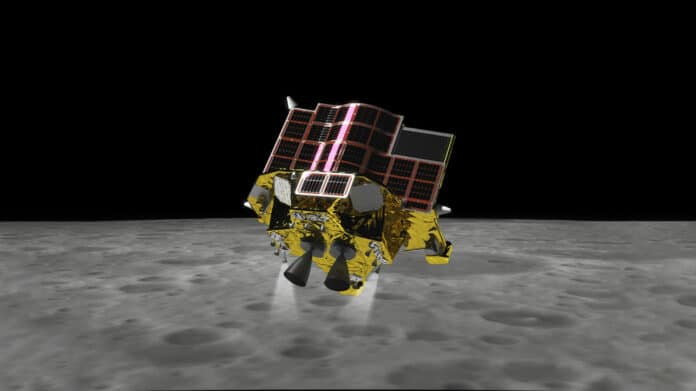The Japan Aerospace Exploration Agency (JAXA) announced that the Smart Lander for Investigating Moon (SLIM) was successfully inserted into lunar orbit at 16:51 (Japan Standard Time, JST) on December 25, 2023. This is a huge step toward pulling off the nation’s first-ever moon landing.
The spacecraft is currently orbiting the Moon in an elliptical path. It takes approximately 6.4 hours to circle the Moon, coming within 373 miles (600 km) of the lunar surface at its closest point and reaching out to 2,485 miles (4,000 km) at the furthest point from the Moon. The orbit change proceeded as planned, and the spacecraft is currently in a normal condition.
This achievement keeps the robotic SLIM moon lander on track to attempt a soft landing on the Moon on January 19. This would be a historic feat, as only four nations – the Soviet Union, the U.S., China, and India – have successfully landed a craft on the Moon before.
The 8.8-foot-long (2.7 meters) SLIM was launched on September 6, along with the XRISM, an X-ray space telescope. Both spacecraft were deployed into Earth’s orbit, but SLIM left the planet’s gravity on September 30 to begin its journey to the Moon.
Now that the SLIM has successfully entered lunar orbit, it will start gearing up for its touchdown attempt, showcasing its “Moon Sniper” skills. Its aim is to hit the landing-zone target with an accuracy of 330 feet or less, paving the way for more extensive exploration efforts in the future.
According to JAXA, the SLIM is a mission for researching the pinpoint landing technology required for future lunar probes. With the help of a small-scale probe, the mission aims to verify the technology on the surface of the Moon. The creation of the SLIM lander will be a significant step towards being able to land on specific locations rather than just where it is easy to land. This advancement will make it possible to land on even more resource-scarce planets than the Moon.
After a successful landing, SLIM will also deploy two miniprobes onto the lunar surface after touching down. These miniprobes will snap photos, help mission team members monitor SLIM’s status, and provide an independent communication system for direct communication with Earth.
Notably, this marks Japan’s second attempt at a soft landing on the Moon following the unsuccessful crash of Hakuto-R, a lander built by Tokyo-based company ispace, in April of this year. Hakuto-R crashed after its sensors got confused by the rim of a lunar crater.
